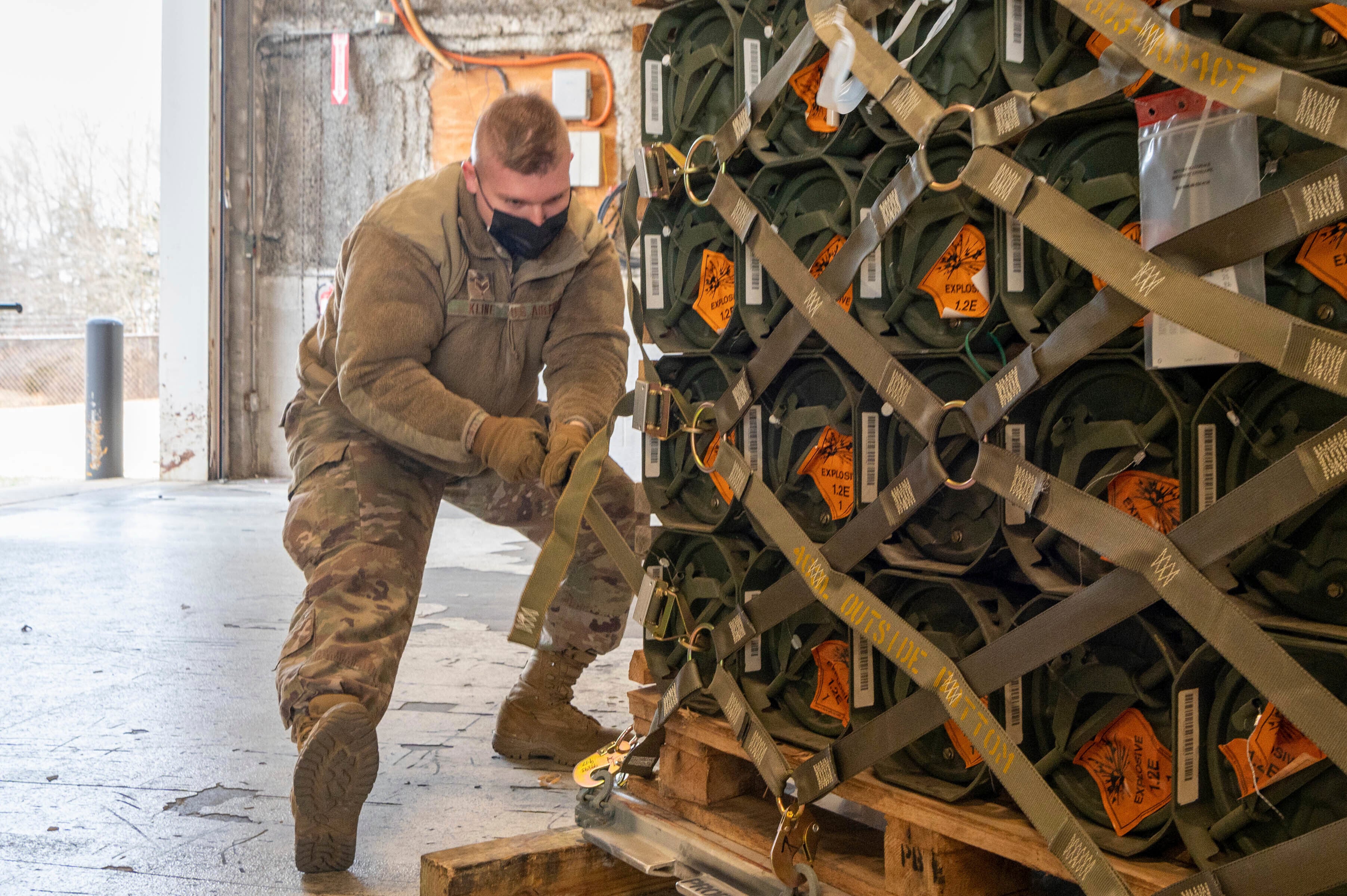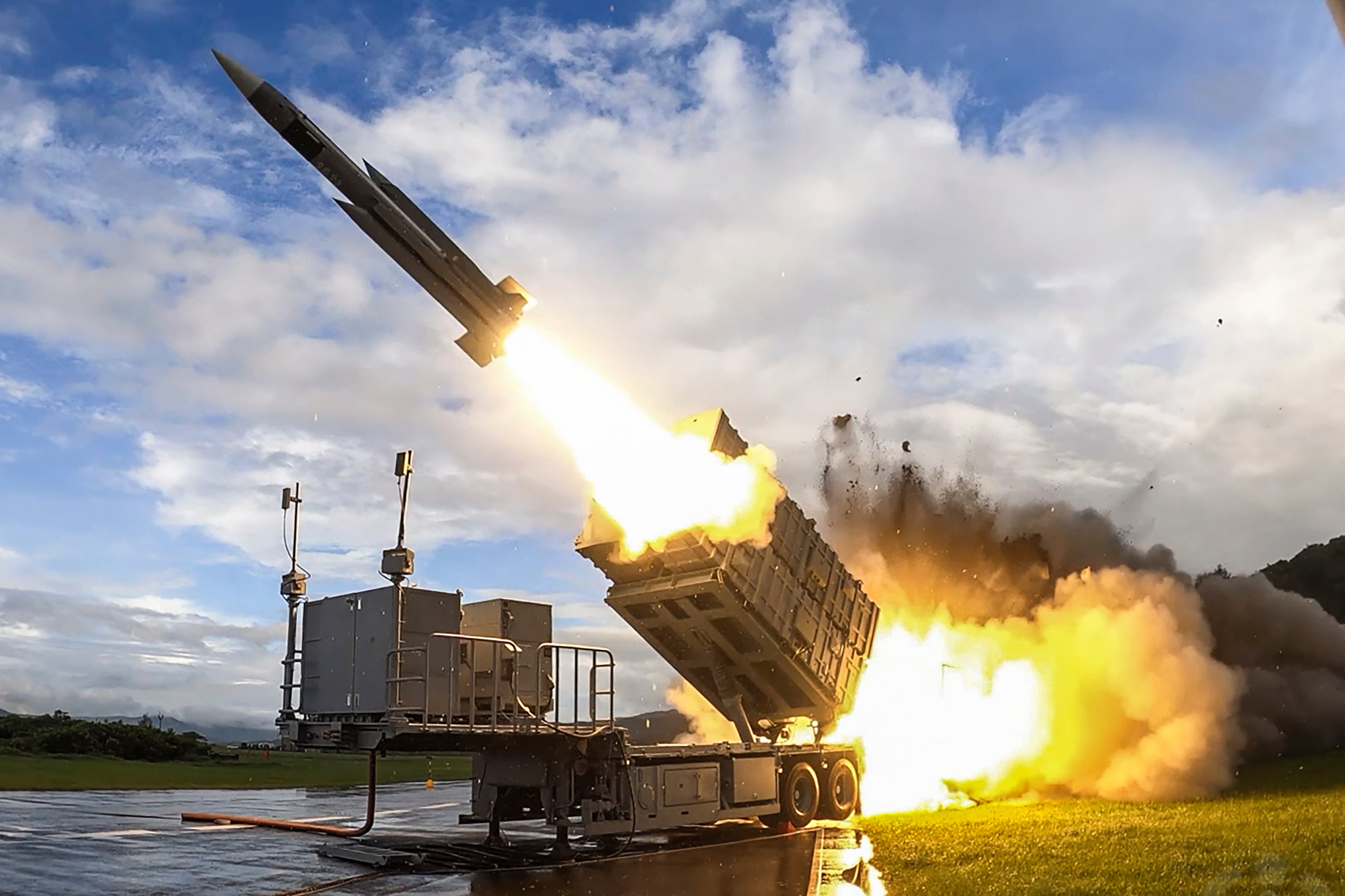WASHINGTON ― Sales of military weapons between the U.S. and foreign governments shot up to nearly $51.9 billion in fiscal 2022, largely because U.S. allies in Europe are rushing to arm themselves in the wake of Russia’s invasion of Ukraine 11 months ago.
The total represented a 49% jump from $34.8 billion in sales the previous year, according to new State Department data. Direct commercial sales ― from contractors to governments ― also grew, reaching $153.7 billion, up from $103.4 billion the year before.
One factor in the surge is the easing of the global pandemic that in 2021 depressed sales from a spike to $83.5 billion in 2020. Also, since Russia’s invasion, European allies and allies in the Pacific have sought U.S. arms to deter Chinese aggression.
One of the biggest orders in 2022 was placed by Indonesia, which analysts see as building a military intended to stave off China. The U.S. approved Indonesia to buy three dozen Boeing-made F-15ID aircraft and related equipment in a deal worth as much as $13.9 billion.
In September, the State Department announced a $1.1 billion arms package for Taiwan, to include 60 Harpoon anti-ship missiles and 100 Sidewinder tactical air missiles.
In Europe, days ahead of Russia’s invasion, Poland ordered 250 General Dynamics-made M1 Abrams tanks in a deal worth as much as $6 billion. Germany in July ordered $8.4 billion worth of Lockheed Martin-made F-35 aircraft, munitions and related gear, citing “a need for unity within NATO, and a credible deterrent” to Russia.
RELATED

Some of the most scrutinized orders of the year came from Saudi Arabia and the United Arab Emirates, which Biden administration paused over the two Gulf nations’ involvement in the war in Yemen.
The State Department, in August, notified Congress this year of one deal for Saudi Arabia to buy 300 Raytheon Technologies-made MIM-104E Patriot missiles for more than $3 billion and another for the United Arab Emirates to buy 96 Lockheed Martin-made Terminal High Altitude Area Defense system for $2.2 billion.
Foreign Military Sales is the core activity of the Pentagon’s Defense Security Cooperation Agency, and the State Department reviews the planned deals to ensure they meet U.S. foreign policy and national security goals.
The FMS numbers represent potential arms sales reported to Congress, but not final sales. If Congress does not reject a potential sale, it enters negotiations that can change prices and quantities.
The Biden administration sees security aid as a means to cement international relationships and to fire up America’s domestic defense industrial base. A top State Department official overseeing the arms sale process, which the Biden administration is working to streamline, said U.S. security aid must be modernized to meet a moment of “tectonic change.”
“This historic increase in arms sales was fueled, in part, through our provision of security assistance,” Jessica Lewis, the assistant secretary of state for political-military affairs, was slated to say at a Meridian International Center event Wednesday. “Security assistance greases the wheels of these security partnerships, furthering our national security while strengthening our bilateral relationships.”
Defense Secretary Lloyd Austin launched an internal Tiger Team in August to evaluate the process of executing Foreign Military Sales cases, with the aim of making it faster. The team is co-led by the Pentagon’s policy office and its acquisition and sustainment shop.
Administration officials have said Russia’s sanctions-struck defense industry is creating an opportunity for U.S. and western defense firms to take a bite of Moscow’s share of the market. According to the Stockholm International Peace Research Institute, Russia was in 2021 the second-largest arms exporter after the United States, and its chief clients were India, China and Egypt.
Lewis, in prepared remarks obtained by Defense News, said the U.S. encourages Eastern European allies to shed their Russian-made gear in favor of American-made equipment, using grant assistance, military training and other means.
“By transitioning countries off Russian equipment, we have a once-in-a-generation opportunity to chart the course of the next several decades. This goes beyond arms — it includes maintenance, parts, training, military exercises and more,” she said.
RELATED

Lewis also emphasized the range of security assistance tools the U.S. is using, beyond arms sales, to build alliances and counter Russia and China.
The U.S. has provided nearly $27 billion in military assistance to Ukraine since Russia began its invasion. Congress has far surpassed the previous $100 million cap on presidential authority to draw from military stockpiles, and it’s appropriated more than $4.8 billion in Foreign Military Financing grants and loans for allies to buy U.S.-made arms.
Pandemic-related acquisition issues have fueled a backlog in the U.S. delivering $14.2 billion worth of military equipment to Taiwan that the island has purchased since 2019. The backlogged equipment included Taiwan’s $8 billion purchase of 66 F-16 fighter jets, but also smaller, asymmetric weapons systems Washington believes would be useful in deterring and thwarting a potential Chinese invasion.
China considers the self-governing island a rogue province and its leaders have pledged to bring it back under Beijing’s control, by force if necessary.
Referencing delays for U.S. arms sales to Taiwan, Lewis said the U.S. must “build more and build faster,” cautioning that it’s “not enough to arm Ukraine and support Taiwan’s self-defense capacity if the weapons take years to arrive.”
“Long production timelines will cause us to miss out on this opportunity,” she said. “These delays undermine the competitiveness of the U.S. defense industry, and in some cases negatively impact the security of our allies and partners.”
In addition to the the defense industrial base’s challenges to manufacture and deliver capability on time, a hurdle for the U.S. government is a lack of contracting and program staff within the Pentagon to manage sales, said Keith Webster, the president of U.S. Chamber of Commerces’s Defense and Aerospace Council.
Still, Webster called the newly published numbers of notifications and actual sales “very robust.” Because Capitol Hill has been favorable to most sales, Webster said he expects anything notified to Congress to be implemented.
“If something is not eventually implemented post notification it most likely would be at the request of the foreign government,” he said.
Earlier this year, Defense Security Cooperation Agency director James Hursch projected that allied efforts to backfill stocks of arms sent to Ukraine will drive “continuing increases” in foreign military sales over the next three years.
“We have enjoyed a rebound in arm sales,” Hursch said in October at the Association of the United States Army conference. “I’m not sure how steep the slope [of the increase] will be, but that’s based on the facts that our allies and friends will be replenishing their stocks.”
Allies are also expected to draw lessons from Ukraine’s fight to buy the next generation of equipment. Pentagon officials said at the time that they expect future investments in armored maneuver forces and precision fires, among other categories of arms used in Ukraine.
Joe Gould was the senior Pentagon reporter for Defense News, covering the intersection of national security policy, politics and the defense industry. He had previously served as Congress reporter.







